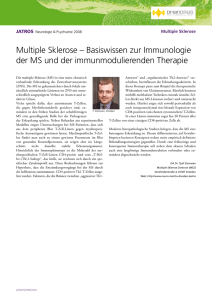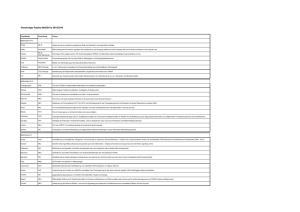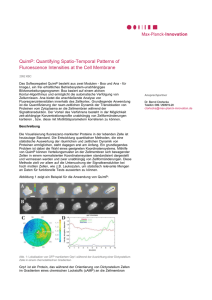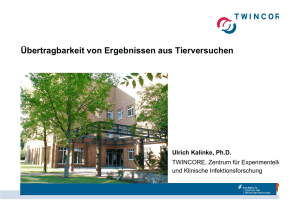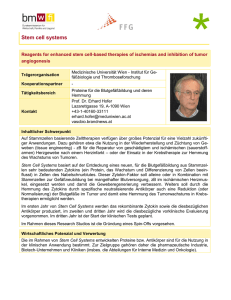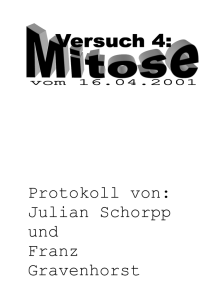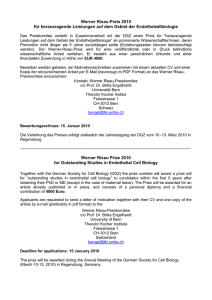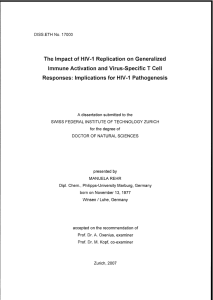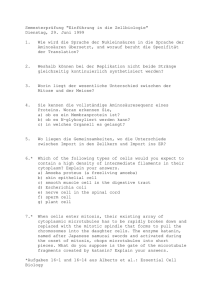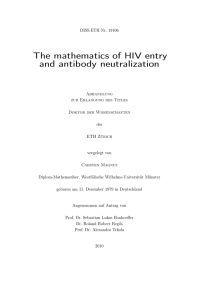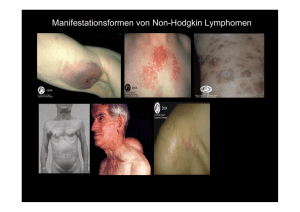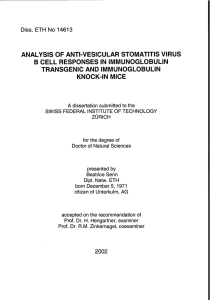Virus
Werbung
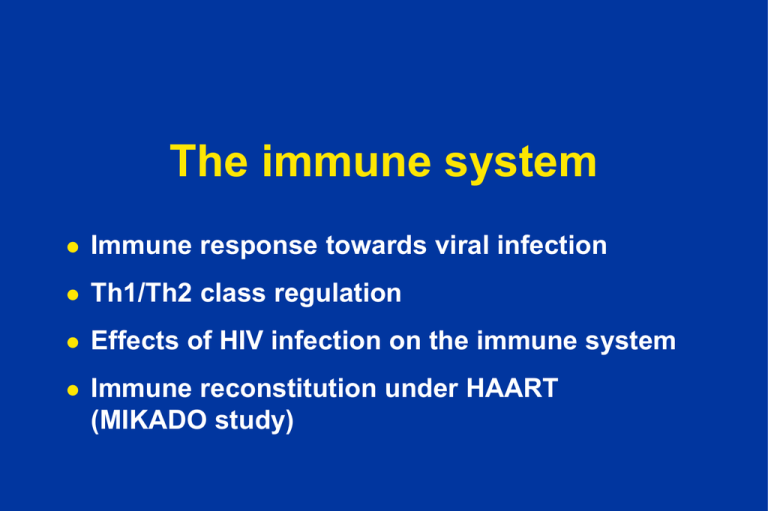
The immune system Immune response towards viral infection Th1/Th2 class regulation Effects of HIV infection on the immune system Immune reconstitution under HAART (MIKADO study) Specific antiviral immune response Virus APC Viral epitope Class II MHC APC TCR APC T cell receptor Antigen-presenting cell MHC Major histocompatibility antigen Specific antiviral immune response Virus APC Viral epitope CD8 Naive Cytotoxic T cell Class II MHC CD4 APC Helper T cell TCR TCR APC T cell receptor Antigen-presenting cell MHC Major histocompatibility antigen Specific antiviral immune response Virus APC Viral epitope CD8 Naive Cytotoxic T cell Class II MHC TCR APC T cell receptor Antigen-presenting cell MHC Major histocompatibility antigen CD4 APC Helper T cell TCR Activation Activated Helper T cell Activation CD4 B cell Proliferation Memory CD4 cell Differentiation Plasma cell Memory B cell Antibody Specific antiviral immune response Virus APC Viral epitope CD8 Class II MHC Cell death MHC Major histocompatibility antigen Helper T cell TCR Activation Activation Viral epitope T cell receptor Antigen-presenting cell CD4 APC Naive Cytotoxic T cell TCR APC Help Activated Helper T cell TCR Effector Activation CD4 Cytotoxic T cell Class I MHC B cell Proliferation Memory CD8 cell Memory CD4 cell Differentiation Plasma cell Memory B cell Antibody Cell-surface markers APC MHCII MHC II APC CD4 CD45RA CD62Lhi Helper T cell Naive CD38Cytotoxic DRT cell CD45RA+ CD27+ CD28+ Cytotoxic T cell CD38DRCD45RACD27+ CD28+ CD45RO Memory Tc cell Activated Helper T cell CD38+ DR+ CD45RA+ CD27CD28Memory CD4 Th cell CD45RO CD62Llo CD4 CD45RO CD62Llo B cell Memory B cell Plasma cell Helper T cell subpopulations IFN-g IL-12 Th0 IL-4 Th1 Th2 IL-2 IFN-g IL-4 IL-5 IL-10 Delayed-type hypersensitivity Activates B cells HIV: Knospung aus infizierter T-Zelle CEM III B cells 24 hr freundlicherweise bereitgestellt von Dr. David Hockley and Dr. Chris Grief, MRC Collaborative Centre HIV: Virusreifung im Elektronenmikroskop Unreifes Virus reifes Virus Struktur des HIV gp120 z gp41 Virushülle (Lipiddoppelschicht) p24 Reverse Transkriptase tRNA Viruscore virale RNA p9 Protease Integrase Zelluläres Protein p17 Lebenszyklus von HIV HIV-Protease (PI) Reverse Transkriptase (RT) Ribosomen Integrase T-Zelle Prinzipielle Eingriffsmöglichkeiten in den Lebenszyklus des HIV Blockieren der Bindung an die Wirtszelle Verhindern der Fusion mit der Wirtszelle Hemmung der Reversen Transkriptase Hemmung der Reversen Transkriptase: Abbruch der DNA-Synthese bei der reversen Transkription und Inaktivierung Blockieren des der Reversen der Transkriptase Hemmung der Integration Hemmung der viralen Protease Virusassembly Hemmung der Translation Hemmung der Transkription Neutralisieren des freien Virus Elimination HIV-infizierter Zellen Verlauf der HIV-Infektion CD4-Zellzahl Inzidenz opportunistischer Infektionen Zeit seit HIV Serokonversion HIV: Viruslast und Prognose HIV-Kopien/ml 100.000 62 % 50 % 36.270 49 % 25 % 13.020 10.000 26 % 10 % 4.530 8% 5% 1.000 AIDS nach 5 Jahren Tod nach 5 Jahren Mellors et al., Science, 1996 HIV: Viruslast und Prognose HIV-Kopien / ml 100% < 1.000 80% Anteil Überlebender 60% ohne AIDS 1.000 - 9.999 40% 10.000 - 99.999 > 99.999 20% 0% 0 24 48 72 Monate 96 120 144 O´Brien et al., JAMA, 1996 natürlicher Verlauf der HIV-Infektion Primärinfektion Tod Akutes HIV-Syndrom 1000 Opportunistische Erkrankungen Klinische Latenz CD4 Zellen /µl 800 Viruslast 600 AIDS-assoziierte Symptome (ARC) 400 200 0 0 3 6 9 12 1 2 3 4 5 500>CD4 > 300 Infektion Wochen 6 7 8 9 10 11 300>CD4 > 50 CD4<50 Jahre HIV-assoziierte Erkrankungen (USA) 35 Pneumonie (nicht spezif.) 30 Todesfälle(%) 25 20 15 10 5 0 1987 1988 1989 1990 1991 1992 Anz. (10 001) (12 425) (17 155) (19 244) (21 776) (24 230) PCPs MAI Septikämie Kaposi-Sarkom Cytomegalievirus Lymphom Toxoplasmose Kryptokokkose Tuberkulose Bakterielle Pneumonie Leukoenzephalopathie Kandidiasis Kryptosporidiose Selik et al., Ann Intern Med 1995; 123: 933–6 HIV - Viruslast und CD4 - Zellzahl: Gegenüberstellung HIV-RNA Vorhersagewert für +++ CD4-Zellzahl ++ klinische Entwicklung Monitoring bei ART Virusreplikation immunol. Effekte 0.5 log > 0.5 log Messbereich (1.3 -) 2.3 - 6 log ca. 2 log prognostischer Wert Marker für virale klin. Endpunkt Aktivität bester Indikator für Variabilität (inkl. biol.) Entwicklung von OI
